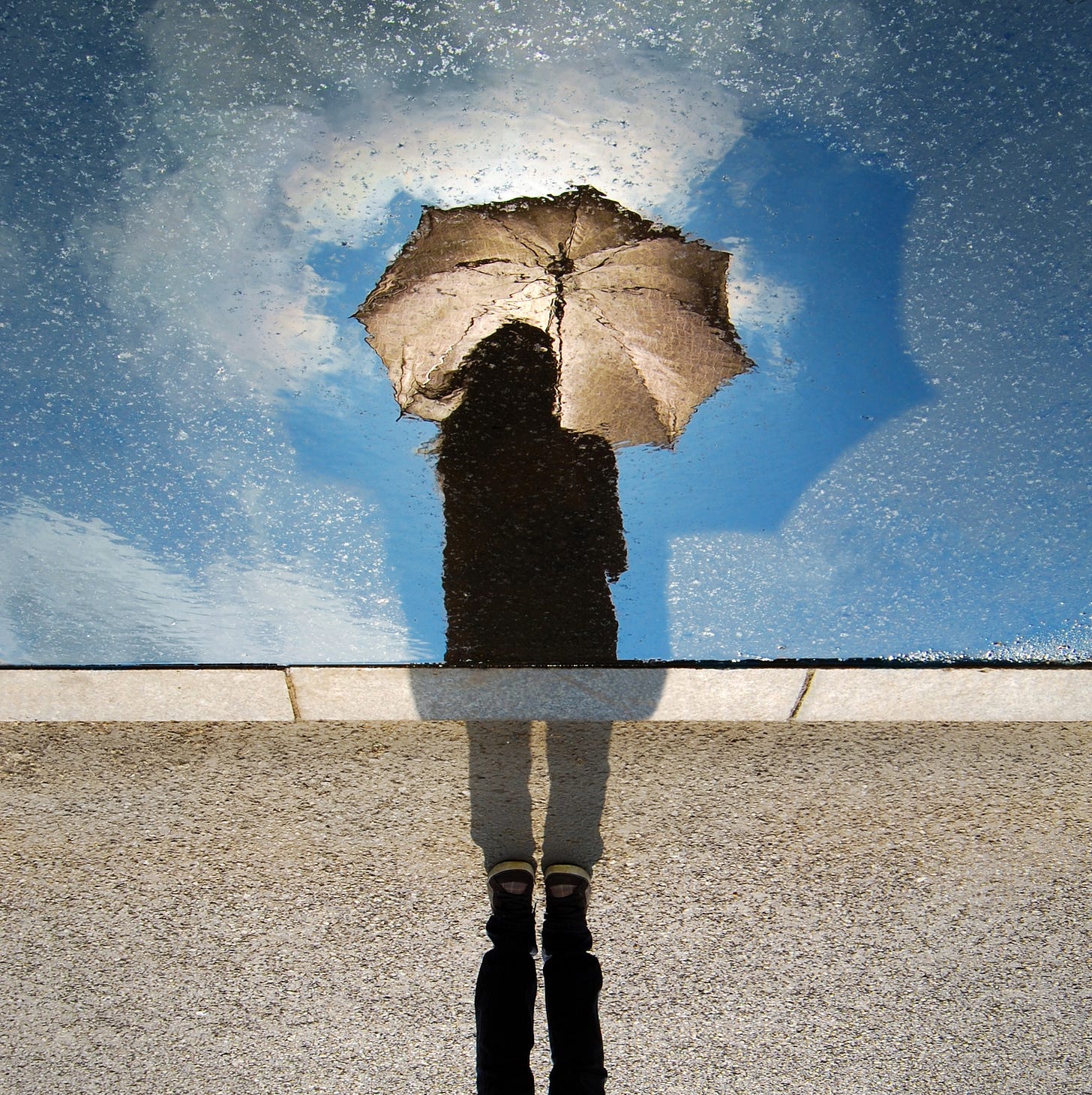I watched the Boy and the Heron with my nine-year-old son in Penrith on a sweltering day in December.
It was worth the ticket price for the gripping opening sequence alone, but the rest was also beautifully crafted, moving, and delightfully bewildering.
Not bad from a director who "retired" in 2013...
As the titular boy hero, Mahito, journeyed through the phantasmagorical underworld of the movie's second act, we watched as adorable white bubble-like spirits called Warawara floated up into a starry sky to be born into the world as people.
My son remarked... "they're in the after-life... or maybe… the before-life!"
Perceptive little fella.
His comment got me thinking about the other half of the film's title, the Heron, and how this archetype — the trickster who straddles worlds — features in so much of Miyazaki's work, typically acting as guide to a human protagonist, taking them into vivid dream-worlds of the unconscious, the fantastical, or possibly both...
Before the Gray Heron, we had Totoro (My Neighbour Totoro), the adorable, furry embodiment of the Kami, divinities venerated in the Shinto religion who inhabit the hidden fabric of our natural world. Mei, the young protagonist, meets Totoro by entering through a secret forest tunnel, the threshold into a special world that Miyazaki described in preparatory notes for the film as a place that evokes...
What we have forgotten.
What we don't notice.
What we are convinced we have lost.

Haku (Spirited Away) is another ambiguous figure -- both dragon and boy -- whose intentions are never quite clear to the young girl hero Chihiro/Sen, partly because he himself is confused about his own identity and origins.
In an act of kindness, Haku leads Sen across the bridge and into the bathhouse of the spirits, a fantastical special world where Sen must prove her essential goodness in a world of constantly moving boundaries and shapeshifting entities.
Howl (Howl's Moving Castle) is a chameleon-like wizard, whose lack of regard for boundaries allows him to move effortlessly between different class strata and worlds, presenting a different face to each. In the steampunk world of the film, he is known variously as "Wizard Howl", "Wizard Pendragon" and "Jenkins the Sorcerer", deceiving both friends and enemies with constantly shifting guises.
Ponyo is a creature of the threshold, part-human, part um... goldfish-god, who leads five-year-old Sosuke into the fluctuating underworld of a magic-infused sea.
Like the Gray Heron, all of these are archetypes of the in-between, akin to the liminal deities of myth, those gods and goddesses who preside over thresholds, gates, or doorways... the crossers of boundaries.
They traverse the same world ruled by Hermes, the "divine trickster" in Greek mythology. Like Hermes, they fulfil the role of psychopomp, a spirit or deity charged with helping the souls of the dead find their way into the afterlife, or, in the case of The Boy and Heron, the underworld of the protagonist's psyche (maybe?).

Miyazaki's films never insist on any final answer as to the reality or otherwise of his characters' fantastical adventures. Perhaps therein lies their delight.
Hermes' Roman equivalent Mercury also gives us the word mercurial, evoking the ever-shifting, not-quite-solid nature of these characters and their constant transformations as they move nimbly between worlds.
The creative tension and energy these trickster-figures bring to mythical and fictional worlds can be extended to the process of making animation itself.
Miyazaki has spoken of this in the way he thinks about creativity and world-building:
Anime may depict fictional worlds, but I nonetheless believe at its core it must have a certain realism. Even if the world depicted is a lie, the trick is to make it seem as real as possible. Stated another way, the animator must fabricate a lie that seems so real viewers will think the world depicted might possibly exist.
Here, Miyazaki articulates a similar idea to that explored in the brilliant book, Trickster Makes This World, by cultural critic Lewis Hyde, who argues that figures like the Heron and Hermes are not merely threshold guardians, but makers of worlds:
That trickster is a boundary-crosser is the standard line. But in the course of writing this book, I realised it needed to be modified in one important way, for there are also cases when trickster makes a boundary, or brings to the surface a distinction previously hidden from sight. In several mythologies for example, the gods lived on earth until something trickster did caused them to rise into heaven. Trickster is thus the author of the great distance between heaven and earth...
Hyde goes on:
Trickster is at one and the same time creator and destroyer, giver and negator, he who dupes others and who is always duped himself... He knows neither good nor evil yet he is responsible for both. He possesses no values, moral or social...yet through his actions all values come into being.
As writers, we attempt a similar boundary-crossing act when we create a story, borrowing some of the spirit of the trickster to create fabricated worlds. Using sleights of hand, misdirection, and illusion, we cobble together bits of artifice, hoping that with a sprinkling of the same magic that animates Hermes, Totoro, Haku, Howl, Ponyo or the Gray Heron, we can knit them together in an enthralling whole.
Miyazaki and the many artists who made The Boy and The Heron (I don’t really subscribe to auteur theory, but if there’s any filmmaker that can lay claim to having a distinct authorial imprint, it must be him, right?) have been drinking liberally from the cup of Hermes. The film is engrossing audiences across global cultural boundaries, and will certainly go down as a brilliant cinematic swan song… that is, if he’s done just yet…







Really thoughtful analysis Cleon. Although any use of fancy words like 'liminal' is always going to impress me. 😀